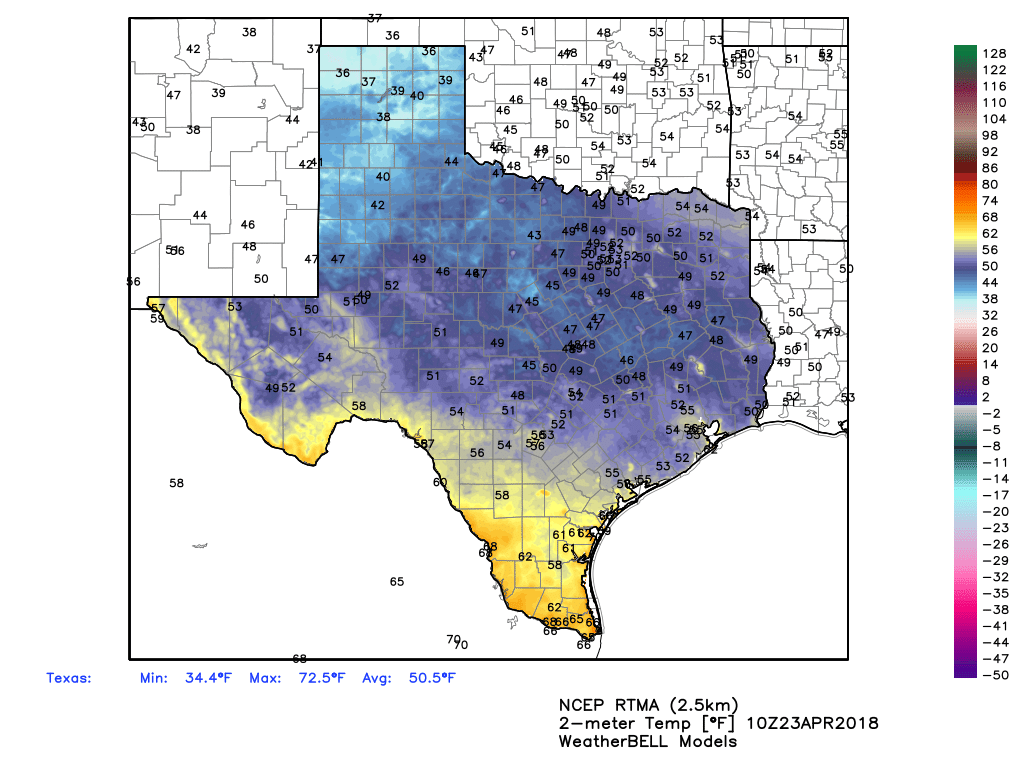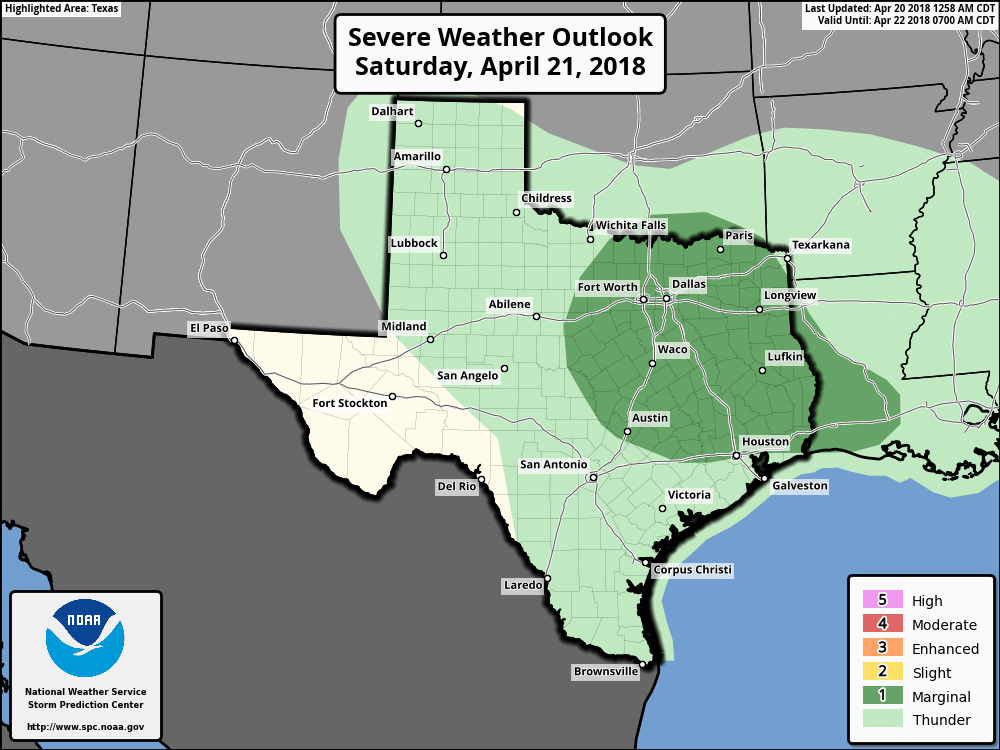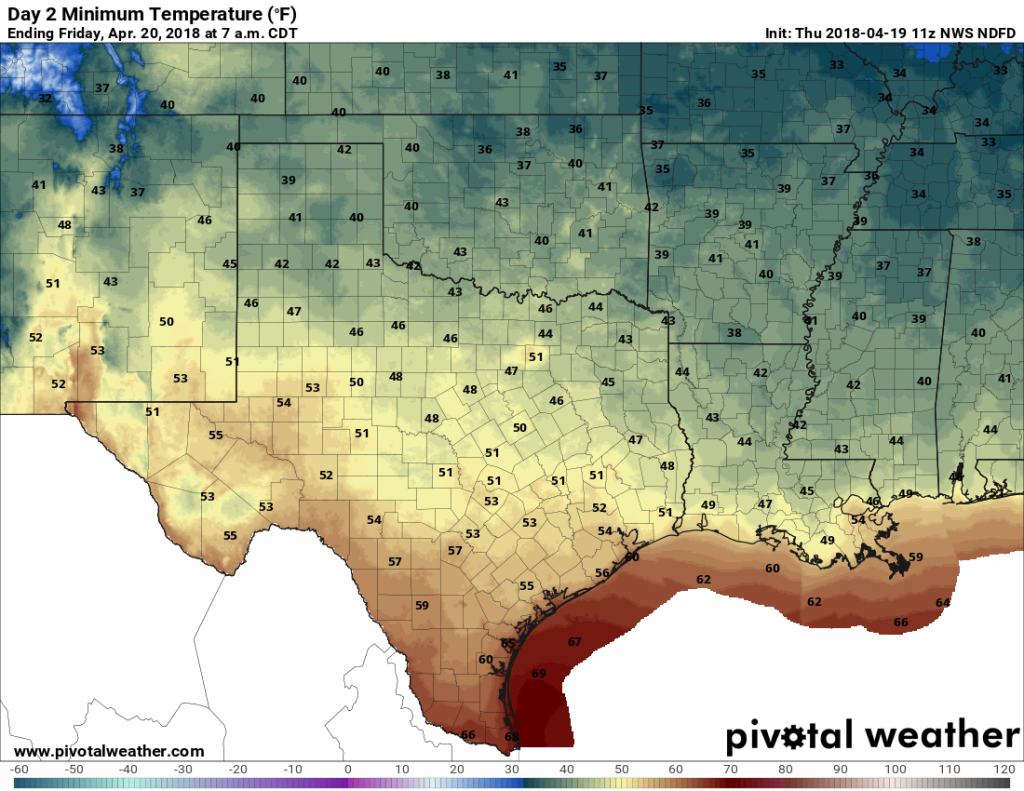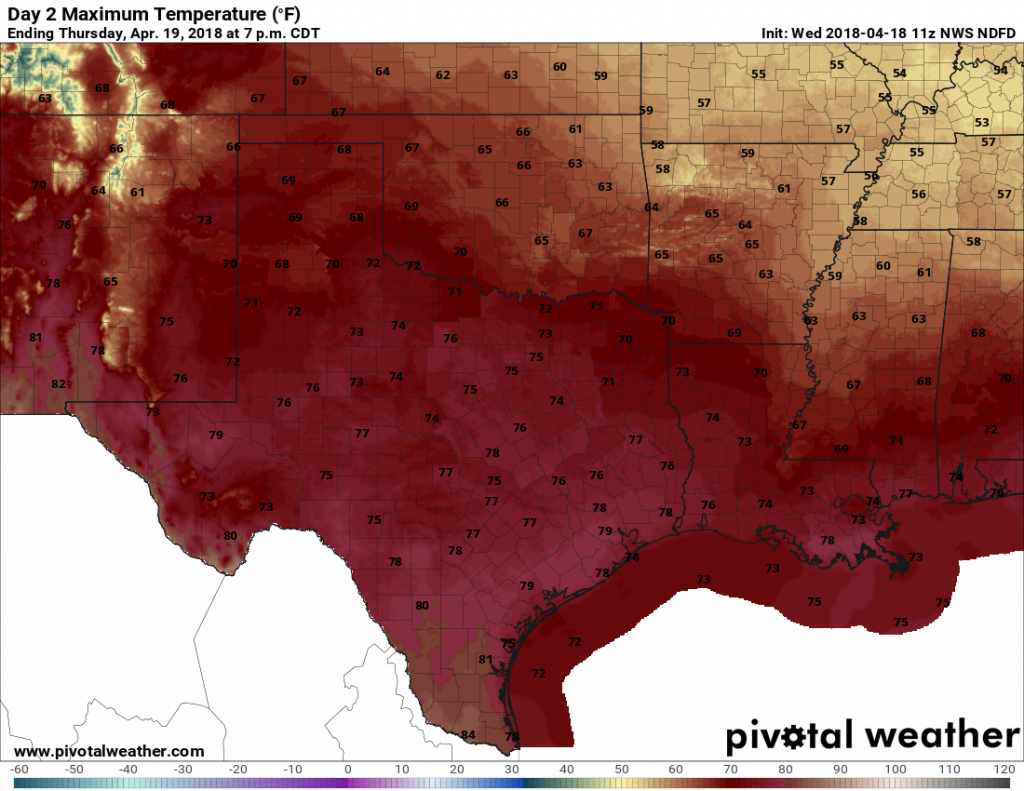After an absolutely superb Sunday, Houston’s weather will remain more or less gorgeous for most of this week—giving us another healthy dose of spring with moderately warm days, and cooler nights, and ample sunshine. Below, we also take a look at weather for the IRONMAN and MS 150 events this weekend.

Monday
You probably couldn’t script a much better weather day for Houston than today—with a chilly start and a cool, dry northerly flow throughout the day. Highs will be in the upper 70s with sunny skies. Winds will be light. Temperatures will be cool tonight, falling to around 60 degrees in the city. This will easily be one of the 10 best weather days of 2018. Easily.
Tuesday and Wednesday
These days will be warmer, but not unpleasantly so, with high temperatures in the low 80s and mostly sunny skies. It appears as though a cool front will push through the region on Wednesday, and Wednesday night, and this could lead to some overnight showers. Not everyone will see rain, and for those that do, rainfall amounts will probably only be measured in a few tenths of an inch of rain. Right now I don’t anticipate a whole lot, if any, thunderstorms—so hopefully you won’t be woken up by any storms.



